A few years ago, I had one of my favorite conversations about tabletop games with Jay Dragon, editorial director of Possum Creek Games, where we discussed radical kindness, community, and the process that helped create Wanderhome. Now Possum Creek has released Yazeba’s Bed & Breakfast, an ambitious project from Jay and co-creator M Vlasek, after a successful IndieGoGo campaign. Currently on a book tour to get the word out about the Bed & Breakfast, Jay and I had another chat about their groundbreaking new TTRPG five years in the making.
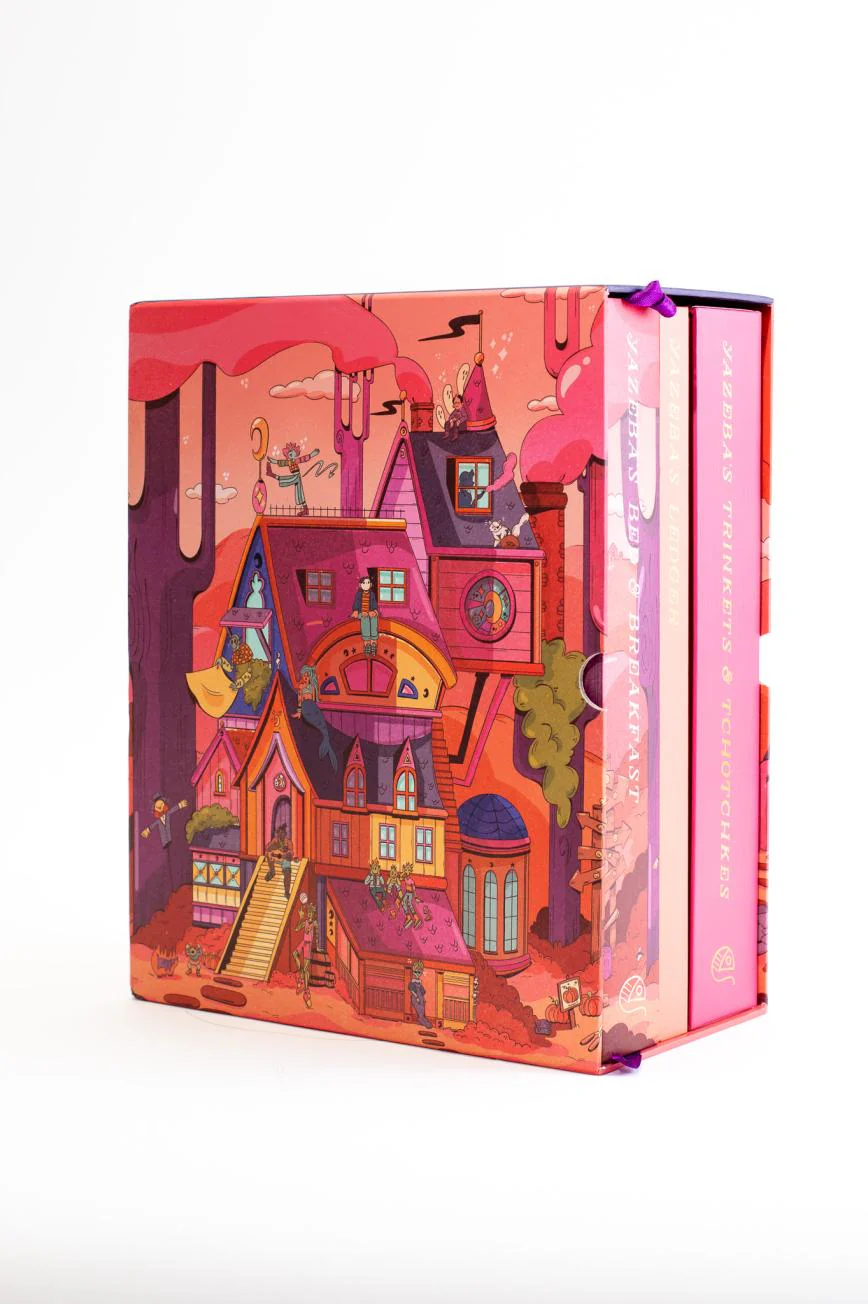
I’m curious, in your words, what Yazeba’s Bed & Breakfast is about?
I think, broad strokes, that Yazeba’s Bed & Breakfast is thematically about what it’s like to exist in a community over a long period of time. Specifically thinking about a community as not as like a single solid thing, but as a nucleus with all these peripheries constantly changing, all these people within it constantly changing. What is it to exist in a community until the community changes so dramatically that it is no longer recognizable as what it was before? And how do you form community with people who suck? How do you exist in community when you’re mad at each other? How do you do it?
Possum Creek’s previous two games were, of course, Wanderhome and Our Haunt. What was the mindset as you started working on this and how you wanted to approach this one differently from other those?
Maisie and I started writing Yazeba’s in November 2019, which was a couple weeks after putting out the Sleepaway PDF. So for us, Wanderhome was like an aside. I literally wrote Wanderhome when Maisie and I took a break from working on Yazeba’s, so it’s kind of hard to say like, oh, well we sat down with this kind of intention separate from Wanderhome. It was us laying the groundwork for Yazeba’s, everything we’ve been doing has kind of been to build up and give us the ability to make this happen.
I think about Yazeba’s a little bit like a dissertation, like the Alchemical Magnum Opus. We’re proving that we’re up to something. Wanderhome was like a, “Hey, pay attention.” And Yazeba’s was us saying “Let’s turn lead into gold real quick and justify our place in the industry.”
What was the genesis for the concept of this setting and this theme back when you were starting work in 2019?
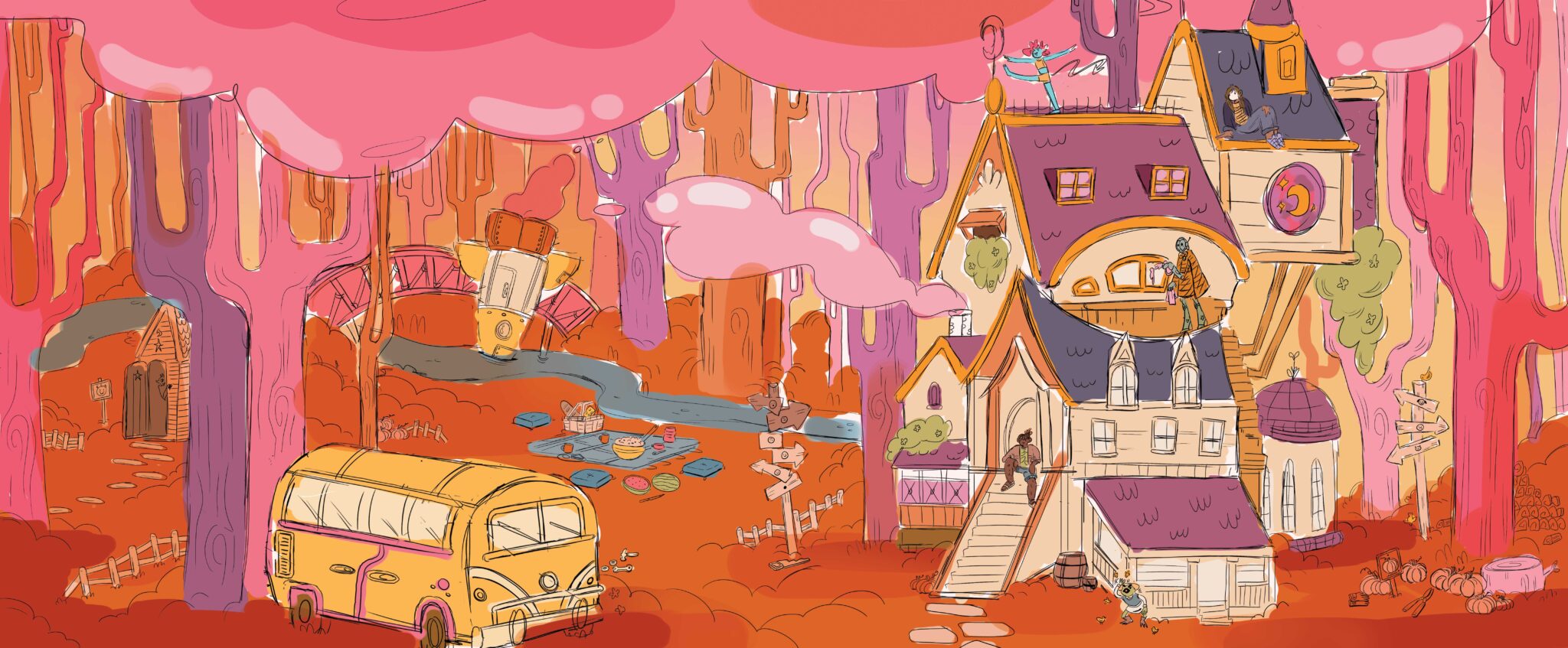
The game began when I wrote down the words “but it’s a bed and breakfast.” And then I wrote down rules of the bed and breakfast. It is always September 15th inside the bed and breakfast. That’s Yazeba’s favorite day of the year and it’s also Gertrude’s birthday. Those were the first two sentences written for the game before anything else. Maisie and I were kind of working on going back and forth. I said “Oh, what if this was Lady Blackbird?” And I wrote up a couple Lady Blackbird style character sheets for Yazeba’s. Maisie has never played or even touched Lady Blackbird. So she looked at what I wrote and said “Oh, I can make some rules for these characters going to a birthday party.” So we made up some rules for a birthday party. And it was not Lady Blackbird at all, but I looked at that and I was like, “Oh, well, those are good rules for birthday party. But what if we had different rules for like catching fireflies?” We went back and forth like that.
The idea of the place was the very first thing we came up with and everything spiraled out from there. So I think once again, it’s not so much how did we come up with this weird setting? It’s more that this setting begged to be written and we were trying to find rules that could articulate this idea in our heads. The book is the bed and breakfast, right? The book is very one to one. It has the rules for the bed & breakfast on the cover, it has closets, it has attics, it has secret passageways.
I want to know how you came up with the very physical way Yazebas’s Bed & Breakfast develops and grows on its own, whether it be with the stickers or the paper clips, or even the way the tags are used in the book. How did you come up with that? And why did you want to have that physical interaction with the book and the character sheets?
I think with the stickers, with the idea of the game being a living object, that’s always been a fascination of mine. I love legacy games. I find them very compelling conceptually. Imagine the gathering cube where we put stickers on the cards to edit them. That was very much kind of my continued fascination with the idea of destroying things and wrecking the journal and making weird art. Maisie and I both come from the same art background. We both went to the Wayfinder experience, and she comes from this large culture of props and artifacts and pre-generated characters. So you’ve got a character sheet and share a character sheet between people, but it takes up artifacts of your time playing.
There’s a lyric game called Natalie Libre’s Indie Kids Menu. And in that your character sheet has a little section for hearts and they don’t do anything, but you can edit the hearts to indicate whatever you want. And that was brilliant. We said “What if this character should have little doodads on them. And then what if that was a way to communicate with each other?” I could do something with my doodad and then you would get to see it later. And so it felt like a lot of gift-giving, it’s all about being able to give gifts to the future?

That’s something I think that’s kind of natural with a lot of tabletop games. You end up with all these notes and stickers and things whether it be in the book on your own sheet. I love the character sheets have a doodle section.
I love the feeling of finding graffiti. I love that feeling when you’re in a dungeon and you realize that some other group of adventurers was here and I’ll never know them, but I see their little mark on the wall. That feels so good. It’s nice to know that someone else was here, that someone else had something to say at some point. And even if you don’t know exactly what they did, you feel like you are in conversation with all those people.
I think I see it come up a lot, especially when I’m talking with tabletop designers who were really trying to push that idea of a conversation between players.
I read Braiding Sweetgrass recently, and it’s got me thinking a lot about RPGs as a gift economy. When I’m running an RPG, I’m putting together a bundle of gifts and I’m giving them to you. Then you take them and you give them to each other and they give you excuses to give more gifts to each other. And broadly what we are doing in the game is giving lots and lots of gifts to each other. Even beyond the conversation, we are packaging and passing on gifts.
I especially love the way collective memory is a part of Yazeba’s Bed & Breakfast, particularly the really beautiful section about the way we engage with books and the disappearance of different things. How did you unify that with this bed and breakfast theme?
The bed and breakfast is a space that contains room for everyone. I remember being a kid at summer camp and there was D&D, they do D&D late at night and a staff member would run D&D. And the way they’d run D&D was you’d sit down and like in five seconds, you roll up a character. You can be anything you want. People are sitting down and they’re playing for five minutes, 30 minutes, two hours, but they’re always popping in and out because it’s just open, it’s a room full of kids. And then the corner is a D&D table. So it’s just whoever wanders by and wants to play for a little bit. You’ve got a story going on, but the characters are constantly dropping in and out. It’s always someone different. And you could start and end a game with completely different people, but through all that…there’s a feeling of coherence. The facilitator has kept everything as a continuous bridge. And that’s really cool.
So what is this space we’ve imagined? We imagined a thing where there’s always someone new. There’s always a sense of the next people, that things are always changing, things are always staying the same, and it’s like a community in that way. People grow, people change, people leave, people arrive, but it’s always shifting and shifting. And eventually you outstep the bounds of the book itself. Yazeba’s makes a very clear argument to me about what it is to live in a home, and the idea that you have a home and you have people around that home. Every day it might be a different group of people who come by, but there’s always a group of people, you know? The people are kind of the other part of this game that are interesting and beautiful in their own ways.
How did you populate Yazebas’s Bed & Breakfast and how did you go about creating all these characters?

It was a combination of archetypical needs we wanted to fill. We wanted old people, we wanted young people, we wanted babies; we wanted to make sure we had the full gamut of age, of identity, obviously we cannot encapsulate all identity, but we wanted to at the very least feel like us and our friends were all spoken to. And then there was an amount of like, oh, well we gotta have this, we gotta have the rabbits in the garden who wear little outfits. You know, what do we gotta have? What if those are an evil skeleton? Yeah, that’s awesome, let’s have an evil skeleton. And then there was a degree of just funny jokes, you know? But we also wanted to make sure all these characters are interesting, multiple things going on. We wrote out a lot of guests who are a bit too one note and so we cut them. Every guest had to have two interesting things going on in order to make the cut then we combined a lot. With the residents, we came up with a ton of character ideas early on and then from that we whittled out who are the characters that we are really interested in seeing grow over a long period of time.
A lot of playtesting went into finding what exactly is their personality? What do they bring to the table? What’s them at their best, at their worst? How do they grow and change over time? All that stuff was all really, really vital there. You gotta have Gertrude, right? But there was no “should make it girls”. No, we have Gertrude. Gertrude is fundamental. Yezeba is fundamental.
But then other characters we wanted to have an older character among the residents, we wanted to have maybe someone who’s a bit more of a dad, and that’s Parish the frog. So we built him up and I realized “Oh man, this character is such a dad.” Let’s lean into that a little bit more, like a whole frog mid-life crisis going on.
It really seems like Hey Kid has a lot of really interesting story beats for them as a character and I’ve seen them talked about a lot even compared to others as being a really interesting part of the game.
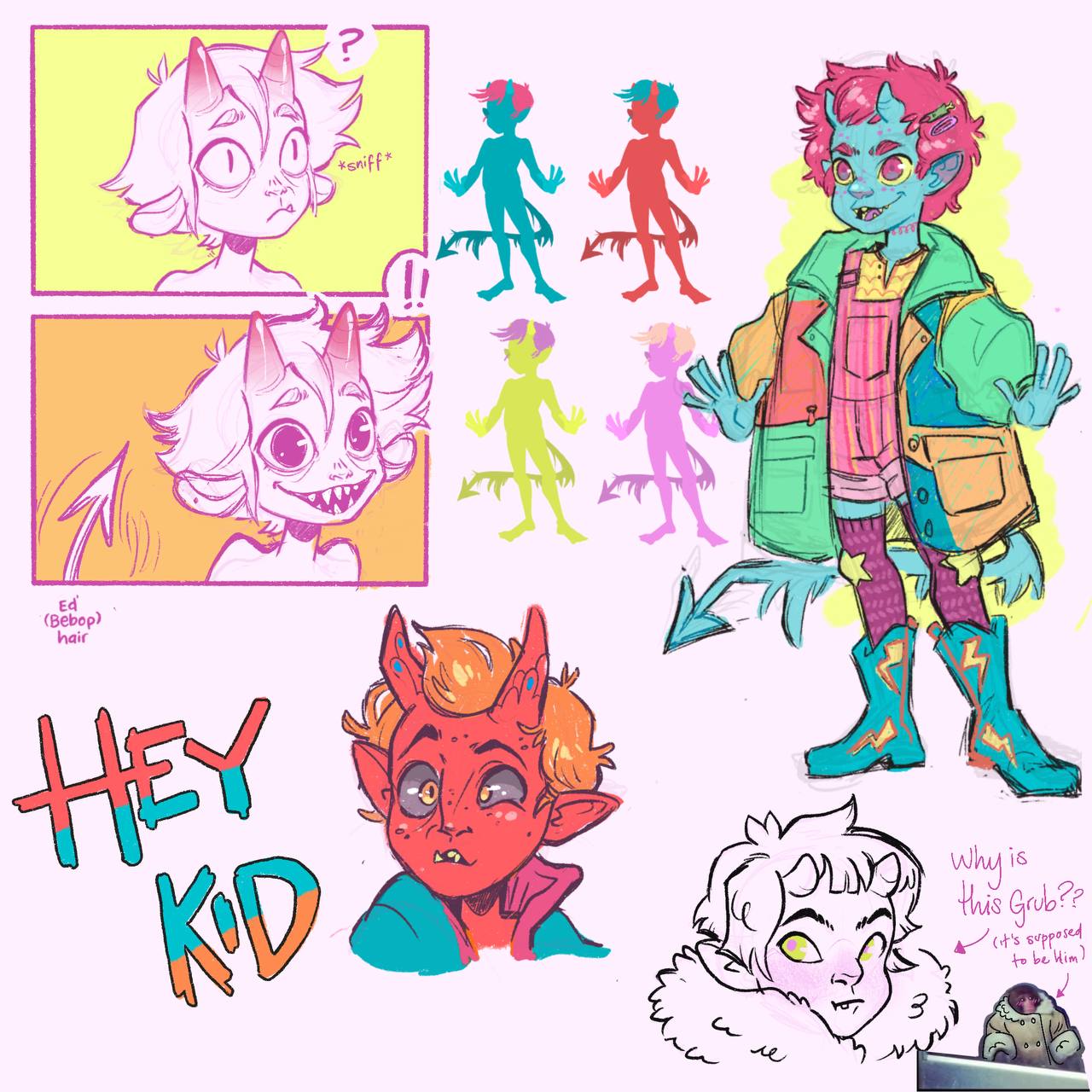
I think it’s great, partially because having a very active character who’s impulsive and messy is a really great way to break the ice. Other residents are more passive, like Gertrude kind of retreats a little bit more, whereas Hey Kid is very much a call to action. Their journey is this Digimon style stat block that that you use to level them up as they go through puberty. So the Hey Kid you end up with is very different than someone else’s Hey Kid. You can read yourself into Hey Kid in a very major way, as opposed to characters like Parish (who’s fantastic), but Parish very much a dad. It’s harder to look at Parish and say, oh wow, what if Parish was like a teenage mom? You can’t, it’s hard to read Parish that way. Whereas with Hey Kid, you’re gonna say, oh, I remember being a kid so I think my Hey Kid is moody, or I think my Hey Kid is cheerful, or creative, or what have you. There’s space of for all of those readings.
Actually, the character with by far the most chapters is Gertrude. Gertrude dominates the list of chapters and that is important because she’s kind of a quiet, shy character. I think she’d get overshadowed if that wasn’t the case. But Hey Kid, I think, comes in second or third. A lot of the chapters you start with have Hey Kid in them, but then they drop off dramatically as you get into the intermediate chapters. And that was on purpose as well. That’s because Hey Kid grows so unpredictably that it’s harder to write chapters with all the possible versions of who Hey Kid could become in mind.
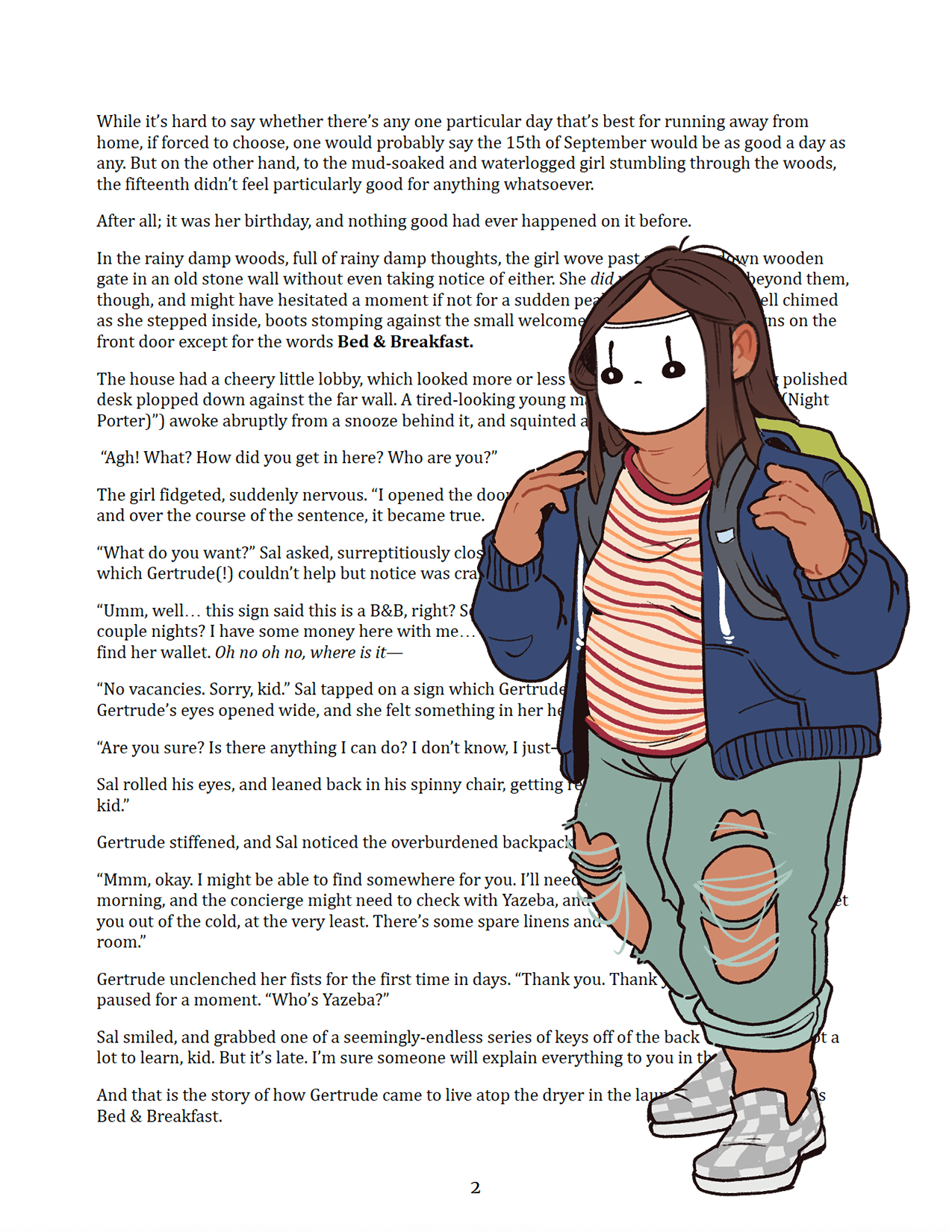
When it comes to writing tabletop RPGs, I think it can be hard to predict where characters are going to go. It’s cool having a mix, have these characters who can grow in different ways. The character arc for someone like Parish or, you know, Yazeba who are kind of at the end of their personal development. They know who they are, but they can change a little bit, whereas Hey Kid and Gertrude, thanks to their age, can still really develop and have players experience a much different kind of arc with them.
How did you work to make Yazebas’s Bed & Breakfast more “accessible” in the sense that it’s easier for a new player to pick up and play?
Yeah, we absolutely put a lot of work into that. I think that a lot of where that work came from was actually Maisie. She did a ton when it came to thinking about how can you sit down and play this with anyone. The thing we talk about with Yazeba’s a lot is to have a short entrance with a deep fall. We wanted to make sure it was possible to get you in the door and playing Yazeba’s within an hour and a half and by the end of that hour and a half, you will have played Yazeba’s and come out the other side of it. It seems like a long time, but it’s a short time in the tabletop RPG world, right?
The most daunting thing about it is the size of the book. We’ve been joking, though, that this is our “rules light” RPG. It’s a four page game a hundred times. If you’re not expecting it, it can feel like a big book. But if you start going through it page by page, I think it opens itself up to you very compassionately. The box set has a quick start on it, which is useful.
You’ve got a list of really interesting guests already, but you also have a huge list of guests and characters and stories that are locked and I’ve never seen that before in a TTRPG.
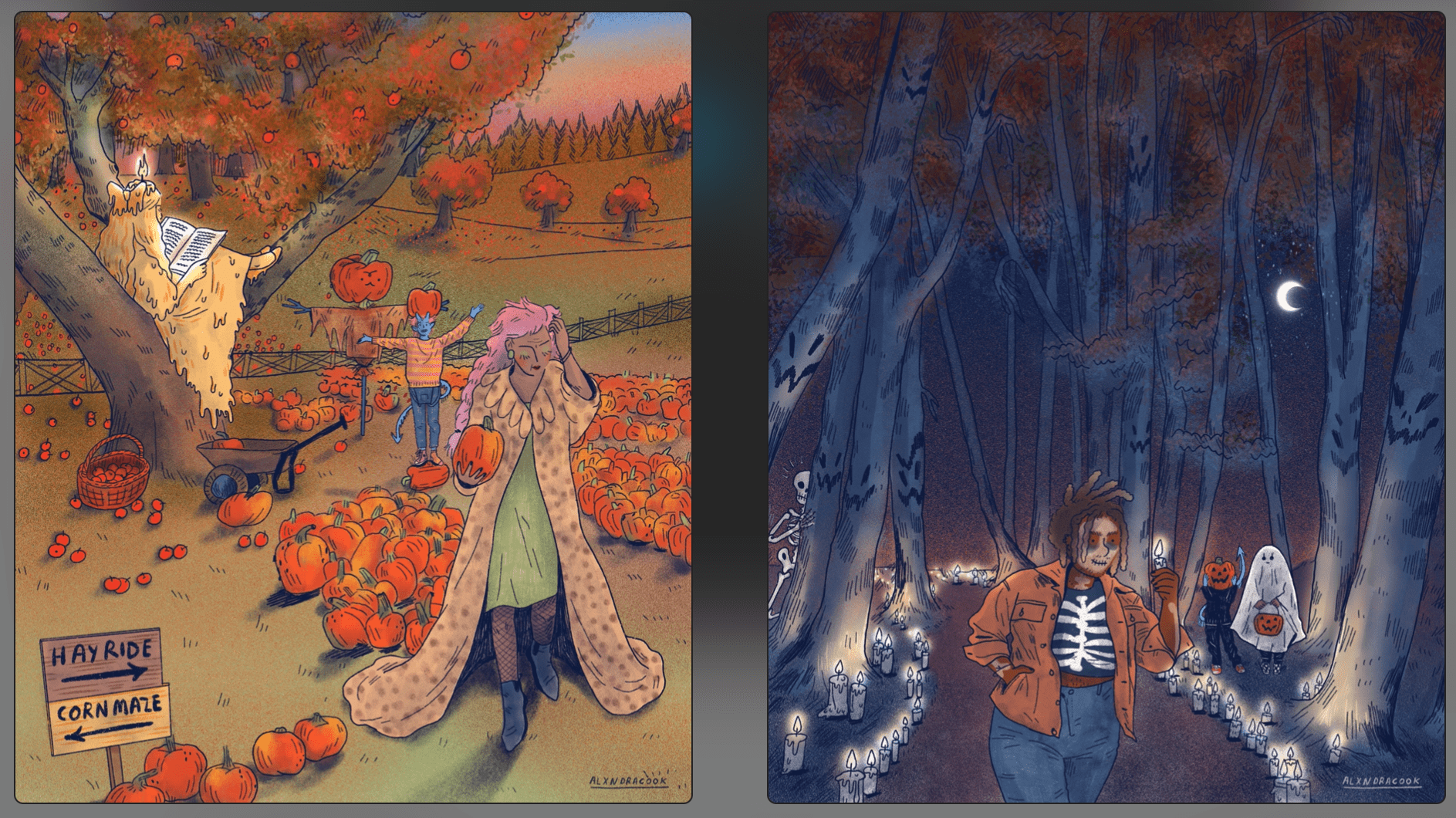
JD: It’s interesting because in some ways you kind of have, right? That’s what level 20 in D&D is! You’re having fun now. Just wait, uh, wait until you get to the other side. We wanted to make the book really feel like anything. You could find anything in there if you looked hard enough. That includes a lot of weird people and a lot of weird activities.
Were there any characters or journeys or stories that were particularly, that you really enjoyed working on or really felt a connection to as you developed them over the course of the game?
JD: My favorite character is Agate Aventurine, who is a kind of troll in the style of like the mystics from the Dark Crystal and who is Yazeba’s only friend. That moment when Yazeba sold her heart and she pushed away everyone who she used to call a friend…Agate was the one person who said “I know you’re pushing away. I know you’re trying to get me out of your life, but I am stubborn and I will remain your friend anyway.”
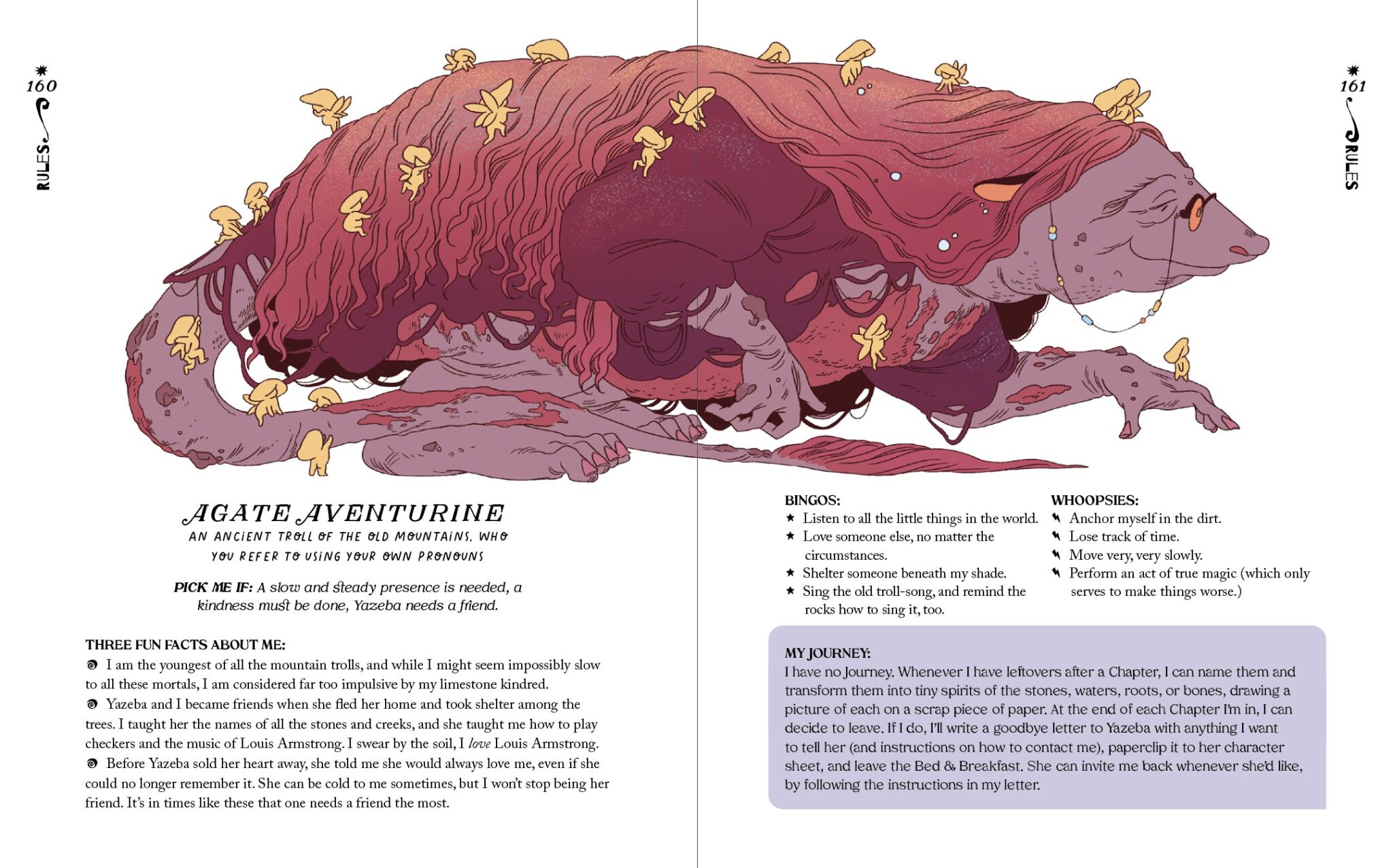
Agate does not have a journey, but instead takes their leftovers and turns them into little forest spirits, which I don’t think there are any rules for, they just do that. There’s something very mystical about asking what those forest spirits do. That’s not the point of making little spirits, just little spirits are present. So that’s great, I love Agate.
I love basically every single guest. I can open up the book and be like, I love this one. We set out that every single guest has something unique going on, has some little thing about them that. We want a game designer to open up to a page randomly and say “Whoa, I didn’t know you could do that.” That was our goal with the guests, to buck expectations of what an RPG is capable of at every possible moment.
My favorite chapter, I think, is the late chapter, “Back to School” where, through montages, you experience an entire school year. And it’s just a different RPG. It’s just another RPG packed into Yazeba’s. It’s just a fun game that kind of comes out of nowhere. It’s part of the fun of Yazeba’s that there’s so many RPGs kind of hidden away inside of it. “The Night Market” is also very good, the chapter you get to play when you have to get your heart back from the Fairy Dream Merchant Monday, that is a very good chapter as well. There’s a lot of fun boss battles sometimes. The game has a lot to offer…a lot of the things that I deeply enjoy.
Even five years in, I look forward to playing and I’ll like suggest to my friends “Oh, do we want to play Yazeba’s this weekend?” I’ve made a game that is perfect for me to just play with my friends. And that is that’s all you can ask for.
You can grab a copy of Yazeba’s Bed & Breakfast from the Possum Creek shop at an MSRP of $75.00 for the hardcover and $150 for the boxed set. A digital copy is also available for $25 through itch.io.
Images via Possum Creek Games
Have strong thoughts about this piece you need to share? Or maybe there’s something else on your mind you’re wanting to talk about with fellow Fandomentals? Head on over to our Community server to join in the conversation!

